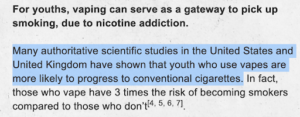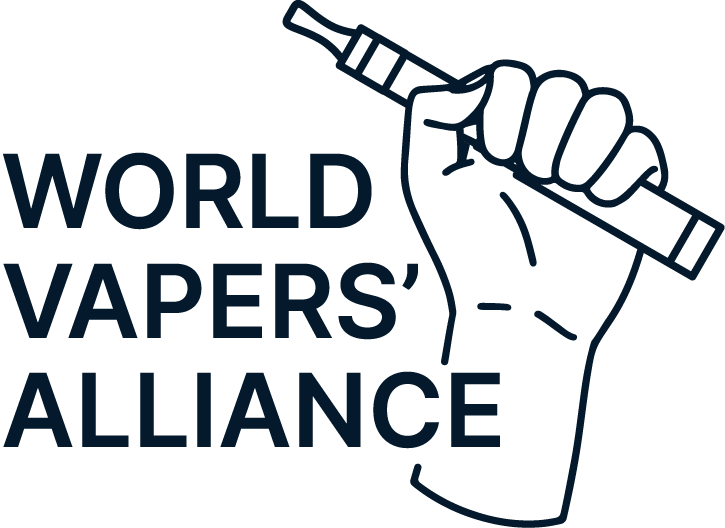Es ist überraschend – und ein bisschen beängstigend –, in einer Pressemitteilung des singapurischen Gesundheitsministeriums vom Juli 2013 über dieselben alten Argumente gegen das Dampfen zu stolpern. Mehr als ein Jahrzehnt später hören wir immer noch dieselben Behauptungen, obwohl umfangreiche Untersuchungen zeigen, dass Dampfen weniger schädlich als Rauchen und ein wirksames Mittel zur Raucherentwöhnung ist. Hier ist ein Blick auf einige veraltete Argumente, die einfach nicht verschwinden wollen:

Im Jahr 2013 hat das Ministerium angegeben, „Wir bleiben vorsichtig, da es keine schlüssigen wissenschaftlichen Beweise dafür gibt, dass E-Zigaretten Rauchern dabei helfen, mit dem Tabakkonsum aufzuhören.“ Kommt Ihnen das bekannt vor? Leider hat das Gesundheitsministerium von Singapur erhebt immer noch diesen Anspruch heute, mit der Behauptung, dass „Raucher, die E-Zigaretten als Hilfe beim Aufhören verwendeten, hatten weniger Erfolg als diejenigen, die pharmazeutische Hilfsmittel oder gar kein Produkt verwendeten.“ Es ist erstaunlich, dass zehn Jahre Forschung, darunter auch Studien, die die Wirksamkeit des Dampfens belegen, offenbar keinerlei Auswirkungen gehabt haben.

Hier sind einige aktuelle Erkenntnisse:
- Aycock et al. (2023) fanden heraus, dass Menschen, die das Dampfen speziell verwenden, um mit dem Rauchen aufzuhören, eine höhere einjährige Abstinenzrate aufweisen als diejenigen, die es aus anderen Gründen verwenden.
- Hajek et al. (2019) kam zu dem Schluss, dass das Dampfen bei der Raucherentwöhnung doppelt so wirksam ist wie herkömmliche Nikotinersatztherapien (NRT).
Und es gibt noch mehr. Bereits 2013 warnte Singapur: „E-Zigaretten könnten möglicherweise ein Einstieg in die Entwicklung einer Rauchgewohnheit sein, insbesondere bei jungen Menschen.“

Doch auch ein Jahrzehnt später zeigen Studien immer wieder, dass das Dampfen kein Einstieg ins Rauchen ist. Zum Beispiel:
- Lee, Coombs und Afolalu (2018) überprüfte fünfzehn Studien, konnte keine Hinweise auf einen „Einstiegseffekt“ finden und hob andere Faktoren wie Ängste und das Rauchverhalten der Eltern als Schlüsselfaktoren hervor, die das Verhalten von Jugendlichen beeinflussen.
- Meza, Jiménez-Mendoza & Levy (2020) ergab, dass die Raucherquote bei Jugendlichen trotz der Zunahme des Dampfens gesunken ist und der Rauchkonsum bei Jugendlichen in den USA einen historischen Tiefstand erreicht hat.
Trotz alledem behauptet Singapur immer noch, dass „Jugendliche, die E-Zigaretten verwenden, steigen eher auf herkömmliche Zigaretten um.“

An diesem Punkt ist es berechtigt, zu fragen, ob dies bewusste Ignoranz ist. Nach einem Jahrzehnt der Forschung, die die Vorteile des Dampfens als sicherere Alternative und effektives Mittel zur Raucherentwöhnung belegt, ist es höchste Zeit, dass die Politik die Realität widerspiegelt und nicht veraltete Ängste. Und wenn man schon dabei ist, könnte Singapur vielleicht auch sein Kaugummiverbot überdenken.
Wenn Sie an tatsächlichen Fakten zum Dampfen und zur Schadensminderung interessiert sind, sehen Sie sich unser Informationsblatt an: https://worldvapersalliance.com/harm-reduction-vaping-fact-sheet/








Eine Antwort